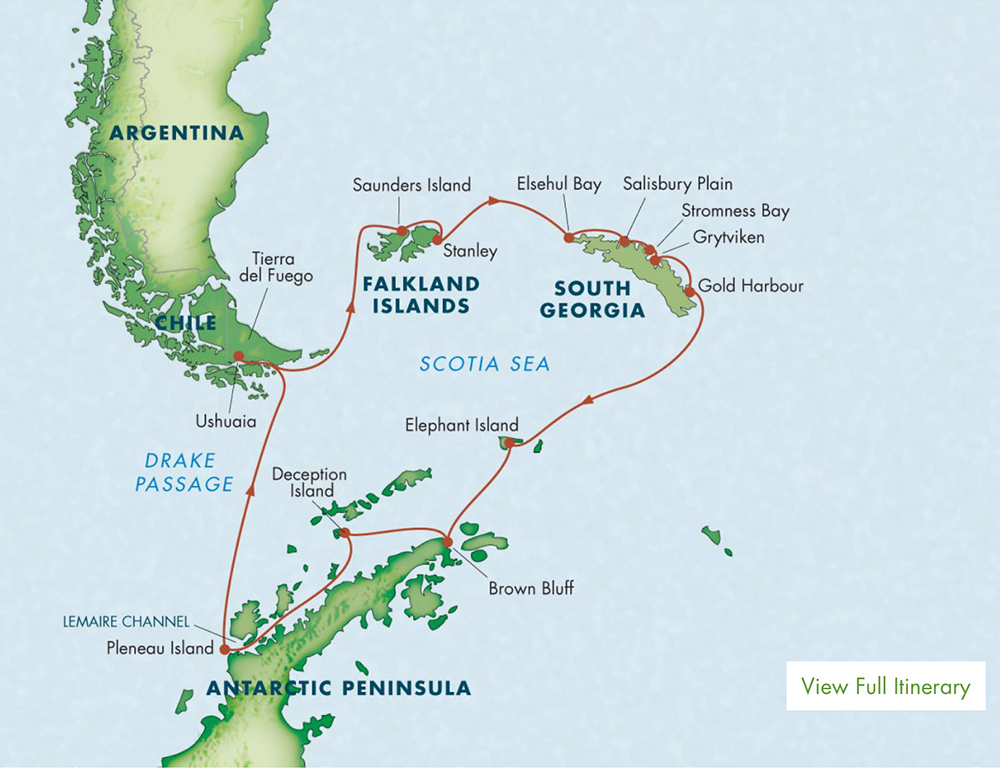
We were warned, and it turned out to be true, that due to weather, et cetera, the route might be changed and we might visit other sites, but we would follow the general path as shown above.
Visit my Home Page .
Want to send me mail? Click here: tomrdavis@earthlink.net.
Antarctica had been on our "list" for quite some time, but when we finally began to plan the trip, we decided that since it is a long way from home, we should see more of the southern world than just Antarctica. We signed up for a tour with the Stanford Alumni organization on an expedition that included not only the Antarctic peninsula but also the Falkland Islands (Islas Malvinas, according to Argentina), and South Georgia Island.
Although Stanford organized the trip, the ship and crew, were run by Zegrahm, so there were lots of other people on the ship. Victor Emmanuel Nature Tours (VENT), a touring company that caters primarily to birders, also used Zegrahm. Stanford and VENT each had about 40 participants and the rest signed up directly with Zegrahm.
Ellyn and I are interested in birds and bird photography, but we usually don't go on trips with tours like the VENT trip. But we were very happy to have them along, guaranteeing that those of us interested in birds would not be slighted. Also, I've included a few photos that are not great, but are the best (or only) photo I got of that species. In general, if the thumbnail on this page looks crappy, so will be the enlarged version.
Here is a map of the proposed trip:

We were warned, and it turned out to be true, that due to weather, et cetera, the route might be changed and we might visit other sites, but we would follow the general path as shown above.
Since we would pass through Buenos Aires, Argentina, we also decided to stop there for a few days to do some birding and then to join the Stanford group in Ushuaia, Argentina.
This page contains some photos and descriptions of the trip beginning in Ushuaia. Almost all the photos are just thumbnails and larger versions can be obtained by clicking on them.
It's amazing how efficient the use of the ship (the Ocean Diamond) was. It arrived in the morning, disembarked all the passengers from the previous trip, refueled, cleaned up, and reloaded all the provisions necessary for our 20-day trip. The same thing was done at the end of our trip: by that evening at 4:00, they were ready to take on a completely new load of guests for the next trip.
The rest of the bird photos in this section were taken on the birding trip in Ushuaia on the morning before we boarded our ship. Our group was a bit too large for a normal birding expedition with about 40 people, spread onto two busses but in spite of that we did see a lot. (With a huge group, mostly moving along trails, quite often a bird is seen by the people/guide at the front and by the time the 40-th person gets there, the bird is often gone.
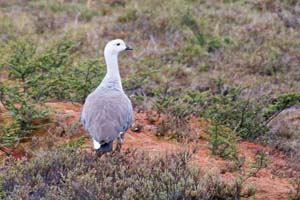 Upland Goose (Chloephaga hybrida)
Upland Goose (Chloephaga hybrida)
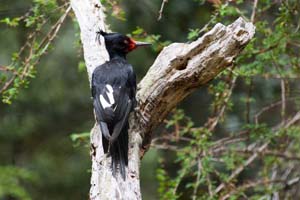 Female Magellanic Woodpecker (Campephilus magellanicus) This was the bird we were most interested to see in Ushuaia. It is huge: about the size of the Imperial Woodpecker and the extinct Ivory-billed Woodpecker (14 to 18 inches in length). This is the female which finally landed in good light. Later I got a photo of the male, but he was deep in the woods and I never got a really clear shot. See below.
Female Magellanic Woodpecker (Campephilus magellanicus) This was the bird we were most interested to see in Ushuaia. It is huge: about the size of the Imperial Woodpecker and the extinct Ivory-billed Woodpecker (14 to 18 inches in length). This is the female which finally landed in good light. Later I got a photo of the male, but he was deep in the woods and I never got a really clear shot. See below.
When one of the guests spotted her for the first time, he shouted, "Holy Mackerel!"
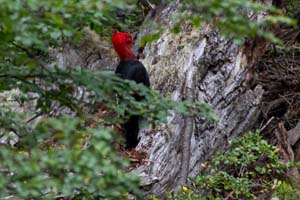 Male Magellanic Woodpecker (Campephilus magellanicus) This is a crappy shot, but at least it's recognizable.
Male Magellanic Woodpecker (Campephilus magellanicus) This is a crappy shot, but at least it's recognizable.
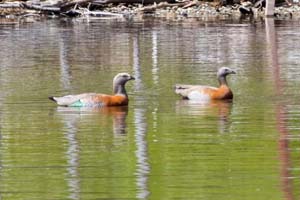 Ashy-headed Goose (Chloephaga poliocephala)
Ashy-headed Goose (Chloephaga poliocephala)
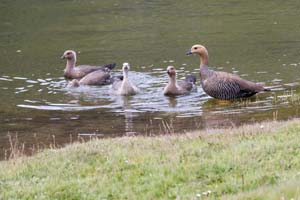 Upland Goose (Chloephaga picta)
Upland Goose (Chloephaga picta)
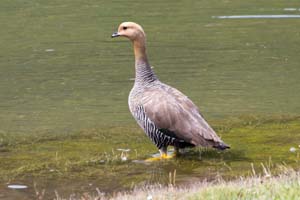 Upland Goose (Chloephaga picta)
Upland Goose (Chloephaga picta)
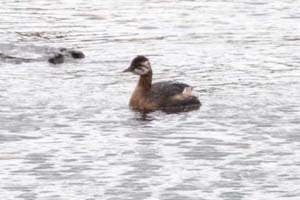 White-tufted Grebe (Podiceps rolland)
White-tufted Grebe (Podiceps rolland)
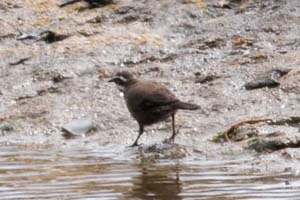 Dark-bellied Cincloides (Cincloides patagonicus)
Dark-bellied Cincloides (Cincloides patagonicus)
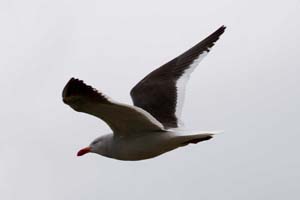 Dolphin Gull (Leucophaeus scoresbii )
Dolphin Gull (Leucophaeus scoresbii )
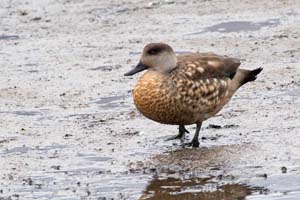 Crested Duck (Anas specularioides)
Crested Duck (Anas specularioides)
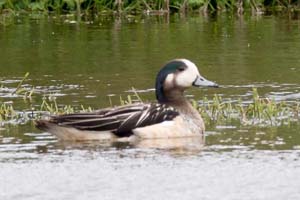 Southern Wigeon (Anas sibilatrix)
Southern Wigeon (Anas sibilatrix)
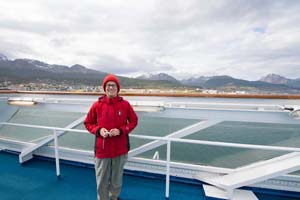 Ellyn on the Ocean Diamond, with Ushuaia in the distance
Ellyn on the Ocean Diamond, with Ushuaia in the distance
We had just sailed, and you can see the city and some of the mountains behind her. These mountains essentially mark the southern end of the Andes.
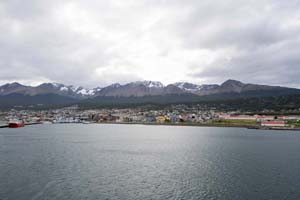 Ushuaia harbor
Ushuaia harbor
Here's a photo without the boat that contains a better view of Ushuaia and the mountains behind it.
 End of the Earth
End of the Earth
This sign marks the southernmost end of the Pan-American Highway that (in theory) runs all the way from Alaska to the southern tip of South America. In fact, there is a small gap in the highway from southern Panama to Colombia. The area is heavy jungle and it make road building there difficult. Today it would surely be possible to build a road, but the completion of the road might make drug trafficking easier.
In any case, there's still a gap, called the "Darien Gap." Ellyn and I have visited the Panamanian "middle end" of the Pan American Highway on another birding trip.
The albatrosses were relatively slow-moving and easy to photograph, but the smaller birds were quite fast and flew more irregularly. Just as a point of reference, the photos in this web page represent the best of about 7000 photos that were taken. Of the 6000-odd photos that didn't make the cut, most were blurry bird photos (and then at the end, there were too many cool iceberg photos, and I picked just a few of the more interesting ones).
When we spent days at sea, there were always a few lectures (mostly about an hour long) on wildlife, history, geology, climate change, et cetera, all related to the area we were currently traveling in. Zegrahm provided a bunch of entertaining and knowledgable speakers and the Stanford professor (Rob Dunbar) also spoke often.
In addition, almost every evening before dinner was a "recap" of the day's events, a discussion of the proposed activity for the next day, and usually some other hilarity. It was usually accompanied by appetizers and wine, so it was worth attending.
And speaking of "before dinner," there was more food than you can imagine. I joked about eating "nine square meals per day." If you woke up early, there was a pre-breakfast "coffee and pastries," then an enormous breakfast with every kind of breakfast food you can imagine, and an hour and a half to eat it. Lunch was the same, but then there were sandwiches and pastries at about 4:00, the recap with appetizers and booze, then a giant dinner, and finally there were chocolates on your pillow at night. Well, that's not quite nine meals, but I was never hungry.
I had promised some of my "fans" at home that I'd do a "Polar Plunge" -- jumping off a perfectly good ship into icy polar waters -- and so I rationalized eating as much as possible in order to build up a sufficient layer of blubber to survive the plunge. Here is my Polar Plunge.
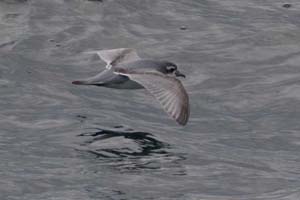
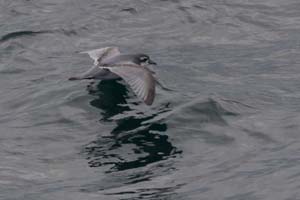 Slender-billed Prion (Pachyptila belcheri)
Slender-billed Prion (Pachyptila belcheri)
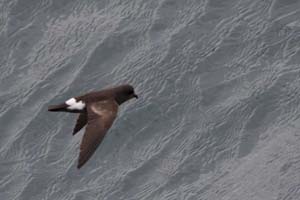
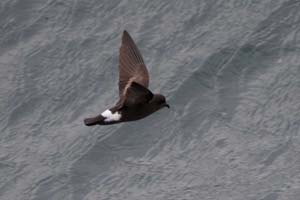 Wilson's Storm-Petrel (Oceanites oceanicus)
Wilson's Storm-Petrel (Oceanites oceanicus)
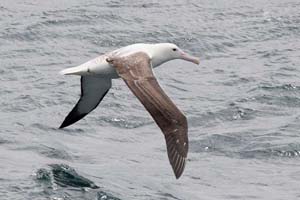
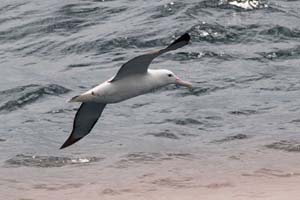 Royal Albatross (Diomedea epomophora)
Royal Albatross (Diomedea epomophora)
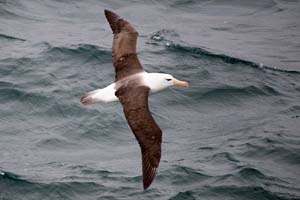 Black-browed Albatross (Thalassarche melanophris)
Black-browed Albatross (Thalassarche melanophris)
The first stop at Saunders Island was great! We saw four of the five species of penguins we would eventually see on the whole trip. As you can see from the photos below, we saw quite a variety of other birds and animals.
The Fur Seals were a little aggressive so we gave them their space. Apparently the mating season for the Elephant Seals was over, so they didn't seem to care about us, one way or the other.
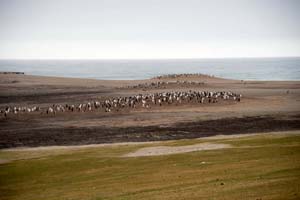 Gentoo Penguin (Pygoscelis papua papua)
Gentoo Penguin (Pygoscelis papua papua)
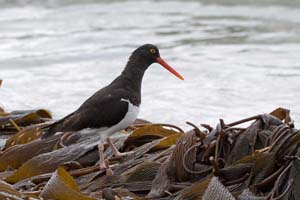 Magellanic Oystercatcher (Haematopus leucopodus)
Magellanic Oystercatcher (Haematopus leucopodus)
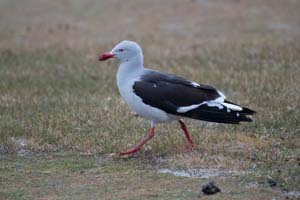 Dolphin Gull (Larus scoresbii)
Dolphin Gull (Larus scoresbii)
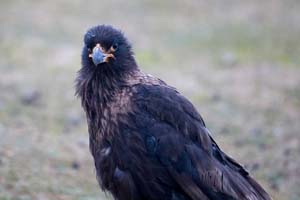 Striated Caracara (Phalcoboenus australis)
Striated Caracara (Phalcoboenus australis)
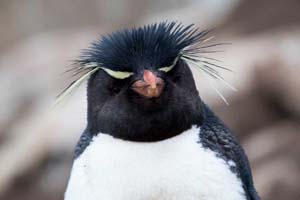
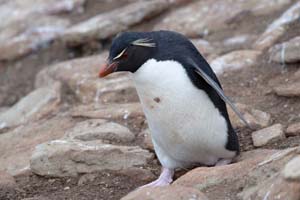 Rockhopper Penguin (Eudyptes chrysocome)
Rockhopper Penguin (Eudyptes chrysocome)
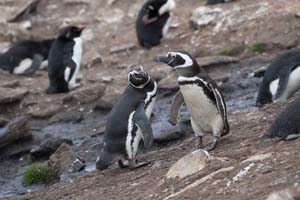
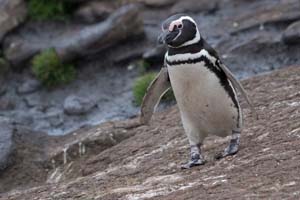 Magellanic Penguin (Sphenicus magellanicus)
Magellanic Penguin (Sphenicus magellanicus)
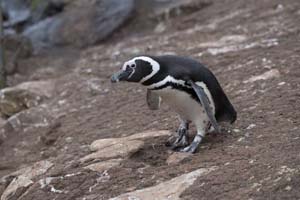
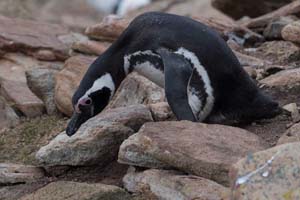 Magellanic Penguin (Sphenicus magellanicus)
Magellanic Penguin (Sphenicus magellanicus)
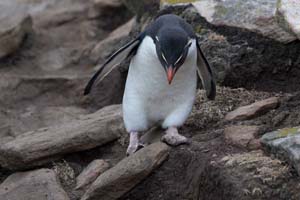
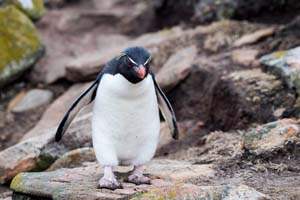 Rockhopper Penguin (Eudyptes chrysocome)
Rockhopper Penguin (Eudyptes chrysocome)
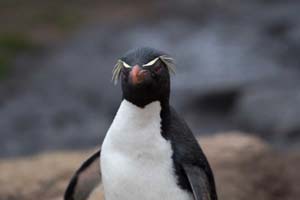
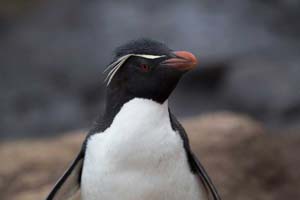 Rockhopper Penguin (Eudyptes chrysocome)
Rockhopper Penguin (Eudyptes chrysocome)
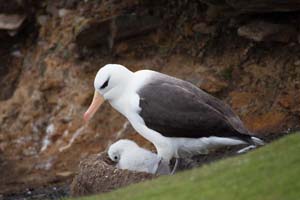
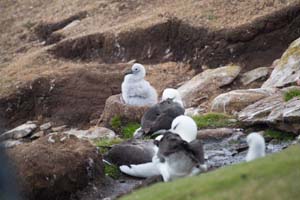 Black-browed Albatross (Thalassarche melanophris)
Black-browed Albatross (Thalassarche melanophris)
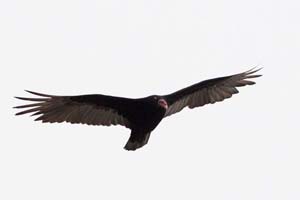
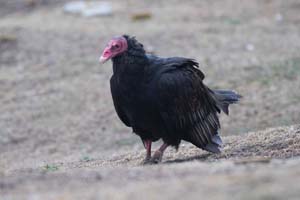 Turkey Vulture (Cathartes aura falklandicus)
Turkey Vulture (Cathartes aura falklandicus)
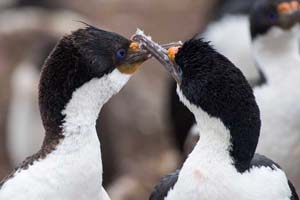
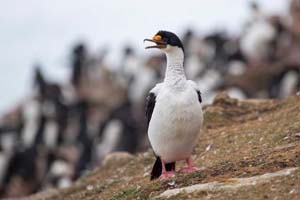
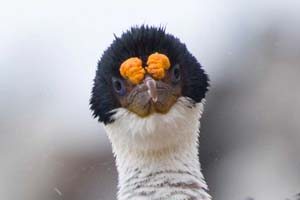 Antarctic Shag (Phalacrocorax purpurascens)
Antarctic Shag (Phalacrocorax purpurascens)
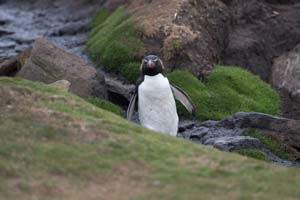
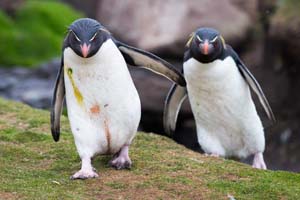 Rockhopper Penguin (Eudyptes chrysocome)
Rockhopper Penguin (Eudyptes chrysocome)
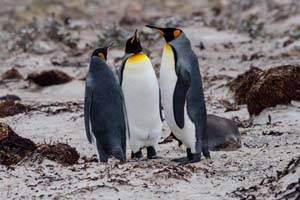 King Penguin (Aptenodytes patagonicus)
King Penguin (Aptenodytes patagonicus)
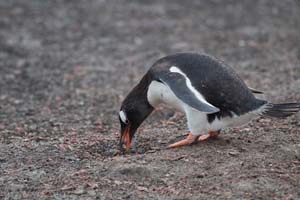
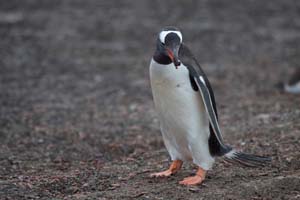 Gentoo Penguin (Pygoscelis papua papua)
Gentoo Penguin (Pygoscelis papua papua)
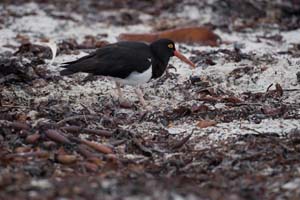 Magellanic Oystercatcher (Haematopus leucopodus)
Magellanic Oystercatcher (Haematopus leucopodus)
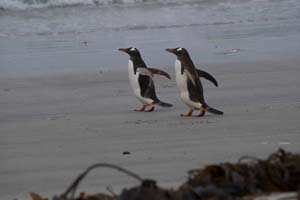 Gentoo Penguin (Pygoscelis papua papua)
Gentoo Penguin (Pygoscelis papua papua)
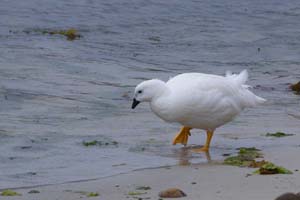
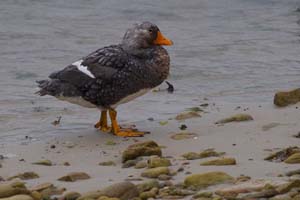
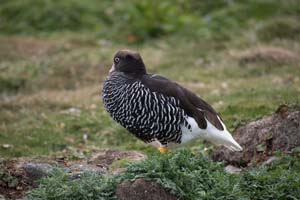 Greater Kelp Goose (Chloephaga hybrida malvinarum)
Greater Kelp Goose (Chloephaga hybrida malvinarum)
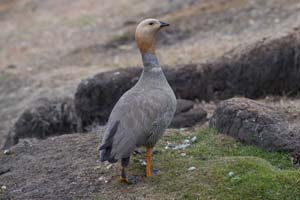 Ruddy-headed Goose (Chloephaga rubidiceps)
Ruddy-headed Goose (Chloephaga rubidiceps)
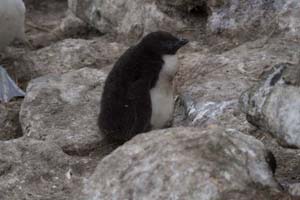 Rockhopper Penguin (Eudyptes chrysocome)
Rockhopper Penguin (Eudyptes chrysocome)
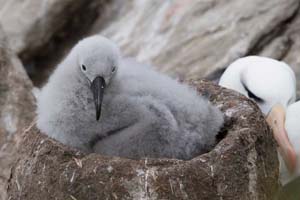 Black-browed Albatross (Thalassarche melanophris)
Black-browed Albatross (Thalassarche melanophris)
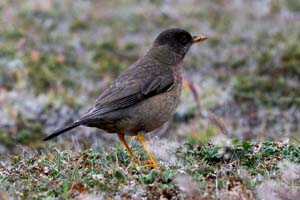 Austral (Falkland) Thrush Turdus falcklandii falcklandii)
Austral (Falkland) Thrush Turdus falcklandii falcklandii)


 Sei Whale Skeleton
Sei Whale Skeleton
Ellyn and I do some geocaching (she more than I), and we made sure to find at least one cache in Stanley. (It was pretty easy: there was one that was about 30 meters from where the bus dropped us off in town.)
If geocaching is new to you, here's the main geocaching website.
One feature of the geocaching game is called a "travel bug": a small item that is placed in a cache somewhere with a goal. The goal is often a place that the bug "wants" to visit, and when it is encountered by a geocacher, if that geocacher thinks he/she can advance it toward the goal, they pick it up and deposit it closer to the goal. Ellyn had a travel bug that had started in Slovakia and "wanted" to get to Antarctica. The bug itself was a small metal penguin with instructions attached to it. It had been all across Europe and finally made it to the US and eventually to California when Ellyn got it. The penguin was able to "visit" the site in Stanley, and whenever a travel bug visits a site, the originator of the bug is notified. The bug had previously visited a cache in Buenos Aires, so the Slovakian owner must have been getting more excited.
To see how Tux the Traveler (the penguin travel bug) is doing, just google "TB5Q2PA."
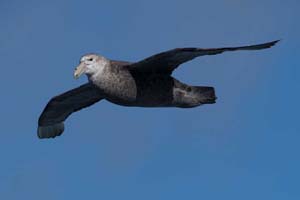
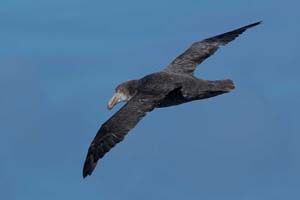 Southern Giant Petrel (Macronectes giganteus)
Southern Giant Petrel (Macronectes giganteus)
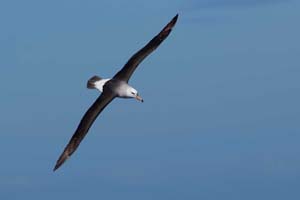
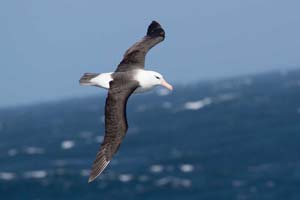 Black-browed Albatross (Thalassarche melanophris)
Black-browed Albatross (Thalassarche melanophris)
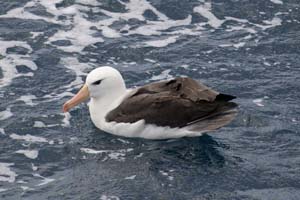 Black-browed Albatross (Thalassarche melanophris)
Black-browed Albatross (Thalassarche melanophris)
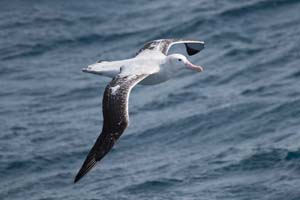
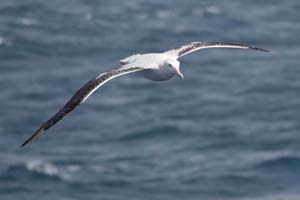 Wandering Albatross (Diomedea exulans)
Wandering Albatross (Diomedea exulans)
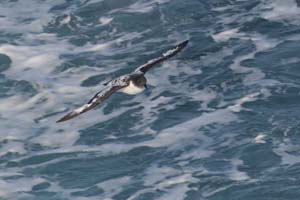 Cape (Painted) Petrel (Daption capense)
Cape (Painted) Petrel (Daption capense)
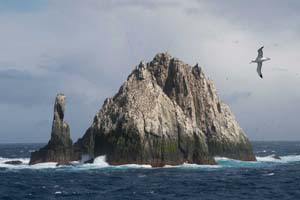
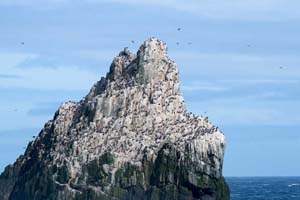 Shag Rocks
Shag Rocks
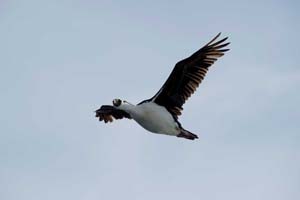
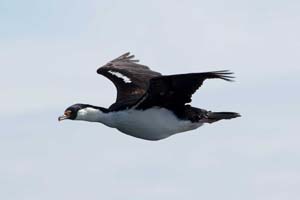 Antarctic (Blue-eyed) Shag (Phalacrocorax bransfieldensis)
Antarctic (Blue-eyed) Shag (Phalacrocorax bransfieldensis)
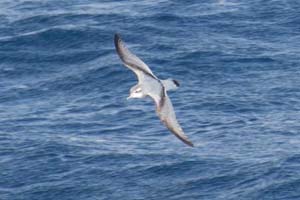
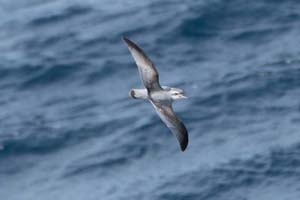 Antarctic (Dove) Prion (Pachyptila desolata)
Antarctic (Dove) Prion (Pachyptila desolata)
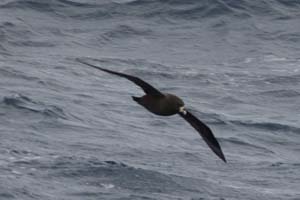 White-chinned Petrel (Procellaria aequinoctialis)
White-chinned Petrel (Procellaria aequinoctialis)
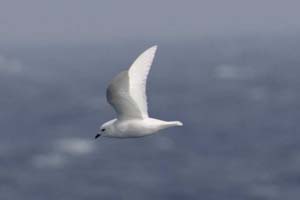
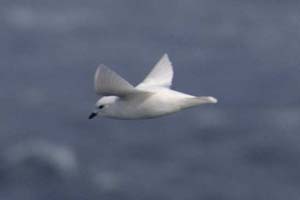 Snow Petrel (Pagodroma nivea)
Snow Petrel (Pagodroma nivea)
 Tom washing his boots for biosecurity
Tom washing his boots for biosecurity
We spent about three days visiting various places on South Georgia Island. There was a very strong storm from the south, so we visited sites primarily on the north side of the island and were able to avoid the worst of it. We also visited the sites in a seemingly random order, again to minimize the storm's impact. All in all, we were able to land at lots of places and saw lots and lots of historic sites and wildlife.
This is in the small museum in Grytviken. You can read in the books that the wingspan of a Wandering Albatross is "10 to 11 feet," but when you see them in the air from a ship, it is really hard to tell just how big they are since there is usually nothing you can use as a size reference, and you can't really tell how far away they are. This stuffed Wandering Albatross above Ellyn makes the comparison easy.
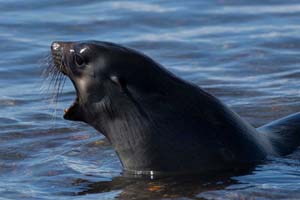 Antarctic Fur Seal (Arctocephalus gazella)
Antarctic Fur Seal (Arctocephalus gazella)
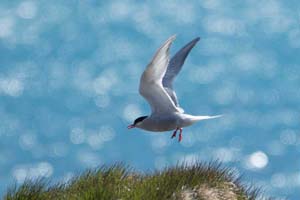 Antarctic Tern (Sterna vittata)
Antarctic Tern (Sterna vittata)
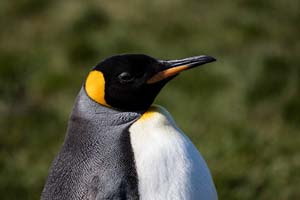
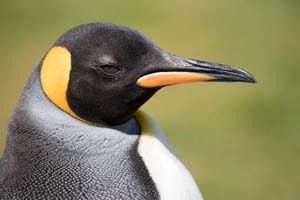 King Penguin (Aptenodytes patagonicus)
King Penguin (Aptenodytes patagonicus)
 Grytviken Church
Grytviken Church
 Grytviken Boilers
Grytviken Boilers
Grytviken was a huge whale processing site in the early twentieth century, and the remains of the station are all here.
 Whaling Ship
Whaling Ship
Note the canon at the bow for shooting exploding harpoons into the whales.

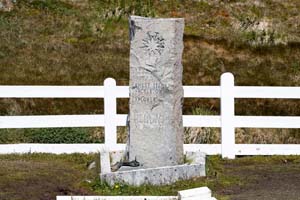 Shackleton's Grave
Shackleton's Grave
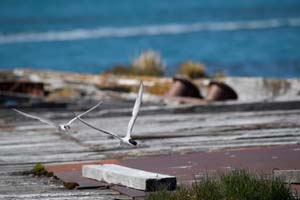
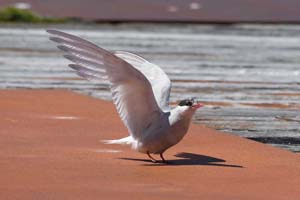 Antarctic Tern (Sterna vittata)
Antarctic Tern (Sterna vittata)
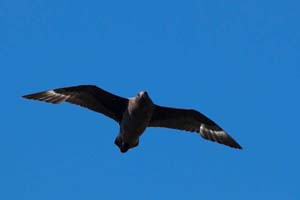 South Polar Skua (Stercorarius maccormici)
South Polar Skua (Stercorarius maccormici)
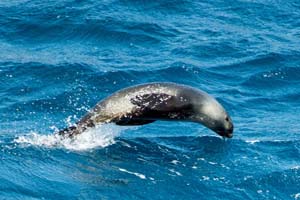 Antarctic Fur Seal (Arctocephalus gazella)
Antarctic Fur Seal (Arctocephalus gazella)
Apparently it isn't just dolphins that swim by "dolphining." Here's a fur seal doing it, and right below, a king penguin swimming in the same way. All the penguins we saw tended to do this.
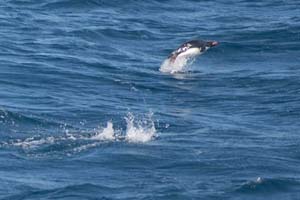 King Penguin (Aptenodytes patagonicus)
King Penguin (Aptenodytes patagonicus)
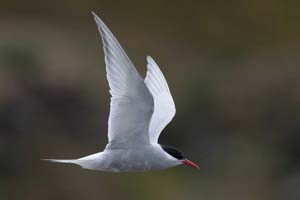
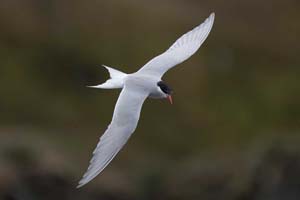 Antarctic Tern (Sterna vittata)
Antarctic Tern (Sterna vittata)
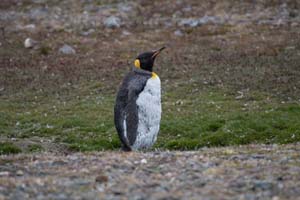
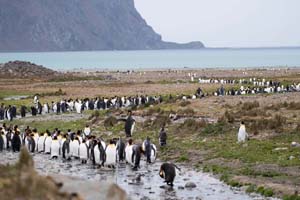 King Penguin (Aptenodytes patagonicus)
King Penguin (Aptenodytes patagonicus)
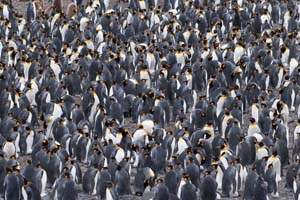
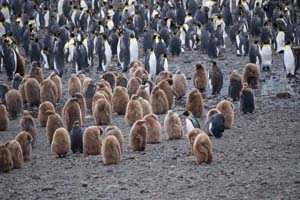 King Penguin (Aptenodytes patagonicus)
King Penguin (Aptenodytes patagonicus)
The little brown guys are just immature King Penguins. They were called "oakum boys" by the early sailors since their brown downy feathers looked like the oakum material used to caulk leaks in the old wooden sailing ships.
 King Penguin Panorama
King Penguin Panorama
Click on the thumbnail above to obtain a very high-resolution version of this panorama.
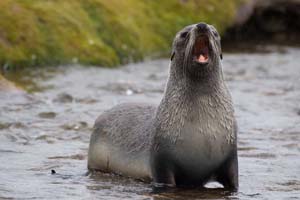 Antarctic Fur Seal (Arctocephalus gazella)
Antarctic Fur Seal (Arctocephalus gazella)
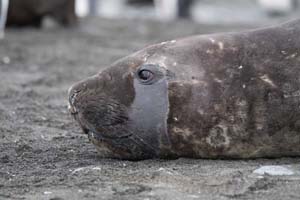
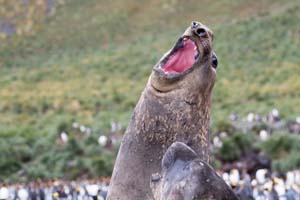 Southern Elephant Seal (Mirounga leonina)
Southern Elephant Seal (Mirounga leonina)
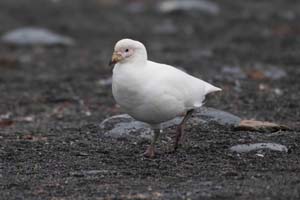 Snowy Sheathbill (Chionis albus)
Snowy Sheathbill (Chionis albus)
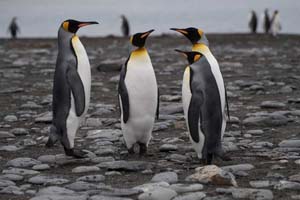 King Penguin (Aptenodytes patagonicus)
King Penguin (Aptenodytes patagonicus)
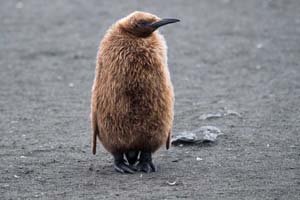
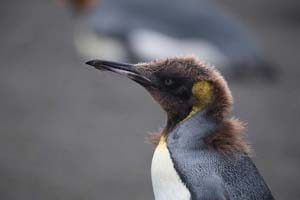 King Penguin (Aptenodytes patagonicus)
King Penguin (Aptenodytes patagonicus)
The guy (gal?) on the right has almost completed its molt to the adult plumage.
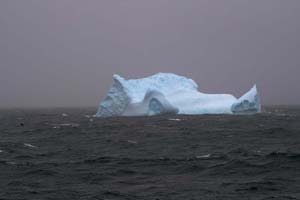 First Iceberg
First Iceberg
This was the first one we saw. I felt obliged to take a photo, but as you'll see later, this is not the "best" one we saw.
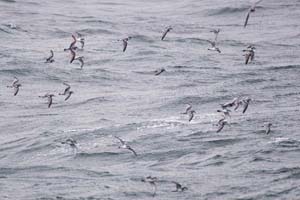 Prions
Prions
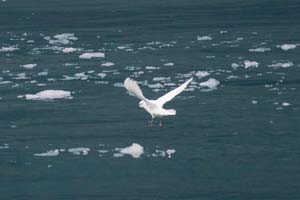 Snow Petrel (Pagodroma nivea)
Snow Petrel (Pagodroma nivea)
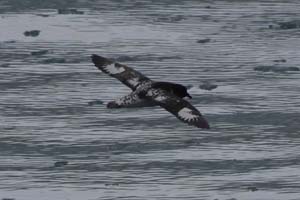 Cape (Painted) Petrel (Daption capense)
Cape (Painted) Petrel (Daption capense)
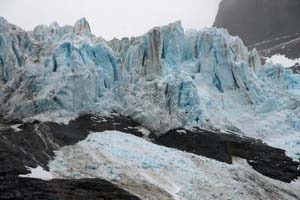 Ice and Rock
Ice and Rock
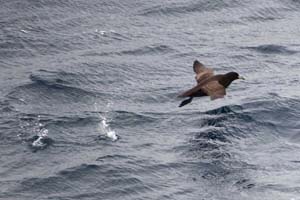
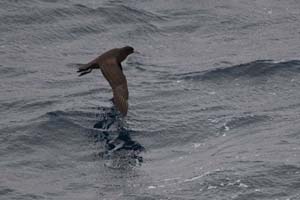 White-chinned Petrel (Procellaria aequinoctialis)
White-chinned Petrel (Procellaria aequinoctialis)
Our plan was to try to land at the site of the men's camp, but on that day the weather was horrible: 20-foot waves and winds to 70 miles/hour. It was quite difficult to open the doors to the outer decks due to the wind's pressure. We got a few photos of the island, but landing was out of the question. It's hard to imagine what Shackleton's men put up with, for months. We were there in the "best" part of the southern summer. They were not.
Here's a photo of the campsite. Pretty grim...
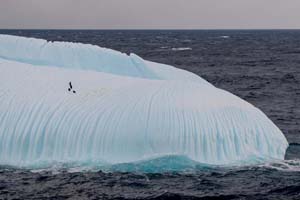
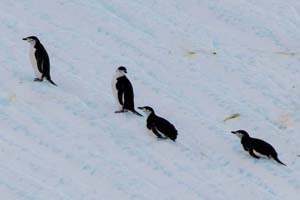 Chinstrap Penguin (Pygoscelis antarcticus)
Chinstrap Penguin (Pygoscelis antarcticus)
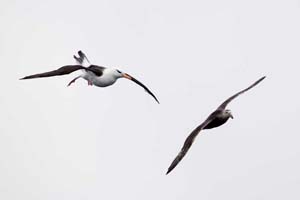 Black-browed Albatross and Giant Petrel
Black-browed Albatross and Giant Petrel
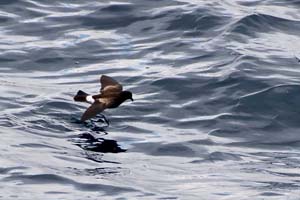
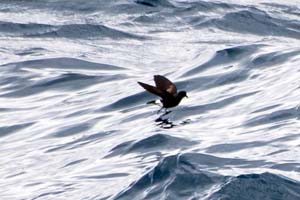 Wilson's Storm-Petrel (Oceanites oceanicus)
Wilson's Storm-Petrel (Oceanites oceanicus)
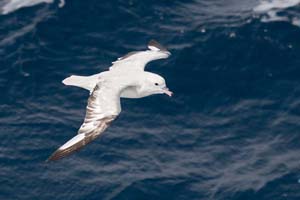
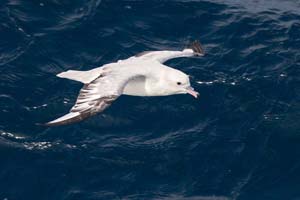 Southern Fulmar (Fulmarus glacialoides)
Southern Fulmar (Fulmarus glacialoides)
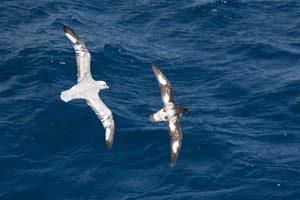 Southern Fulmar and Cape Petrel
Southern Fulmar and Cape Petrel
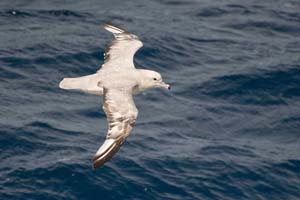
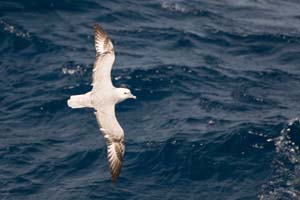 Southern Fulmar (Fulmarus glacialoides)
Southern Fulmar (Fulmarus glacialoides)
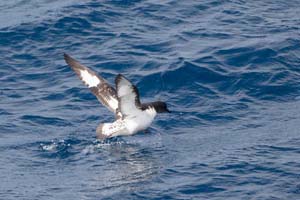 Cape (Painted) Petrel (Daption capense)
Cape (Painted) Petrel (Daption capense)
 Chinstrap Penguins and Arctic Terns (?)
Chinstrap Penguins and Arctic Terns (?)
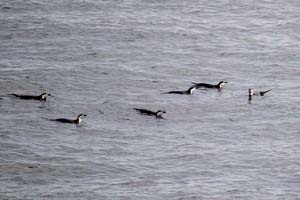
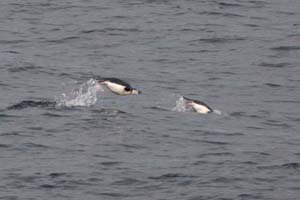 Chinstrap Penguin (Pygoscelis antarcticus)
Chinstrap Penguin (Pygoscelis antarcticus)
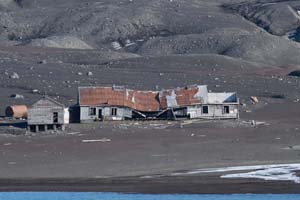 Wrecked research building
Wrecked research building
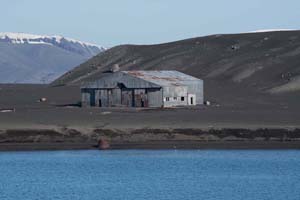 Hangar
Hangar
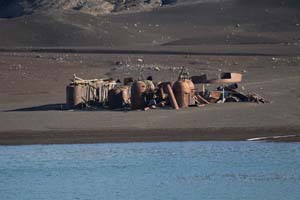 Boilers
Boilers
 Entrance to Deception Island
Entrance to Deception Island
 Tom with Camera
Tom with Camera
 Travel Bug (Tux the Traveller) Arrives in Antarctica
Travel Bug (Tux the Traveller) Arrives in Antarctica
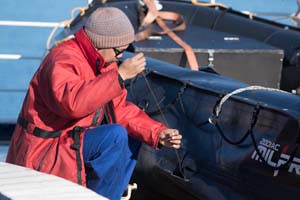 Zodiac Repair
Zodiac Repair
There were two Zodiac landings on the boat at water level, and in heavy waves one of the Zodiacs dropped below the landing and then a rising wave slammed the rubber covering against a sharp steel corner of the landing and punctured it. Here it's being repaired.
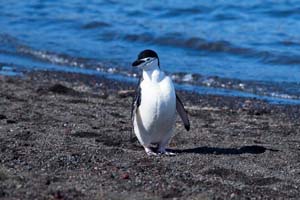
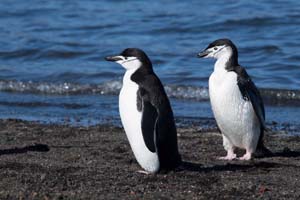 Chinstrap Penguin (Pygoscelis antarcticus)
Chinstrap Penguin (Pygoscelis antarcticus)
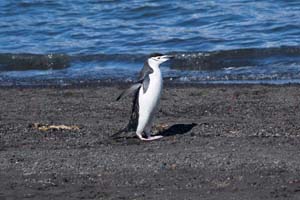
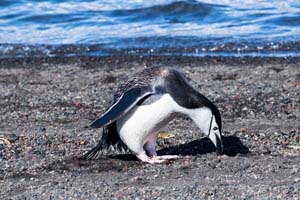 Chinstrap Penguin (Pygoscelis antarcticus)
Chinstrap Penguin (Pygoscelis antarcticus)
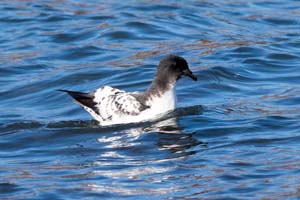 Cape (Painted) Petrel (Daption capense)
Cape (Painted) Petrel (Daption capense)
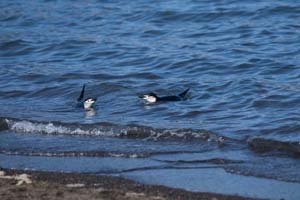
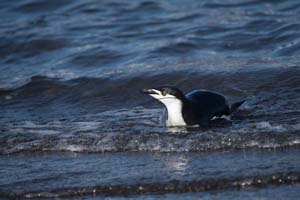
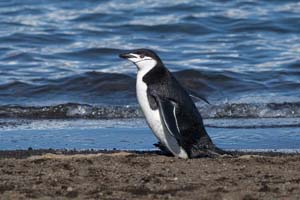 Chinstrap Penguin (Pygoscelis antarcticus)
Chinstrap Penguin (Pygoscelis antarcticus)
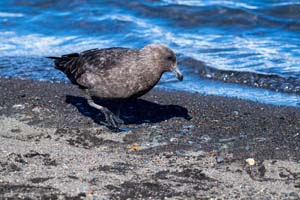 South Polar Skua (Stercorarius maccormici)
South Polar Skua (Stercorarius maccormici)
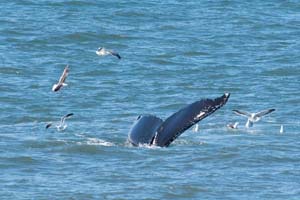 Humpback Whale (Megaptera novaeangeliae)
Humpback Whale (Megaptera novaeangeliae)
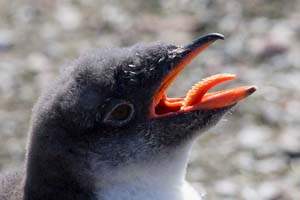 Gentoo Penguin (Pygoscelis papua papua)
Gentoo Penguin (Pygoscelis papua papua)
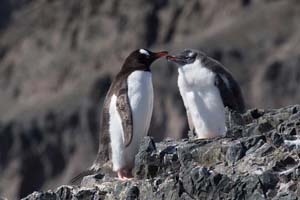 Gentoo Penguin (Pygoscelis papua papua)
Gentoo Penguin (Pygoscelis papua papua)
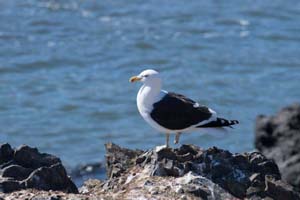 Kelp Gull (Larus dominicanus)
Kelp Gull (Larus dominicanus)
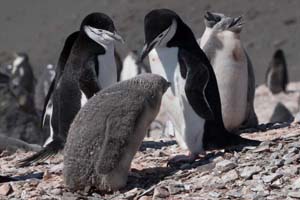 Chinstrap Penguin (Pygoscelis antarcticus)
Chinstrap Penguin (Pygoscelis antarcticus)
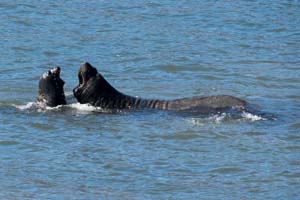 Southern Elephant Seal (Mirounga leonina)
Southern Elephant Seal (Mirounga leonina)
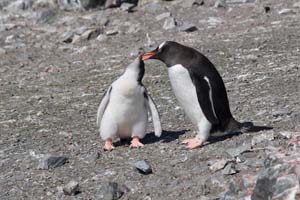 Gentoo Penguin (Pygoscelis papua papua)
Gentoo Penguin (Pygoscelis papua papua)
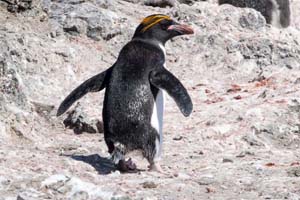 Macaroni Penguin (Eudyptes chrysolophus)
Macaroni Penguin (Eudyptes chrysolophus)
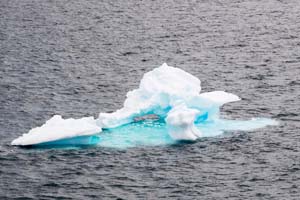 Iceberg
Iceberg
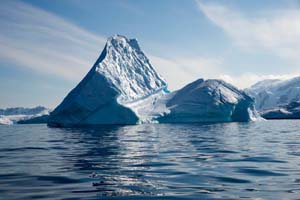
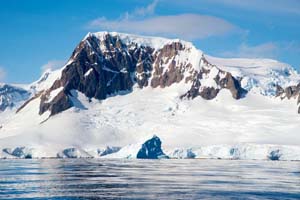 Portal Point, Antarctica
Portal Point, Antarctica
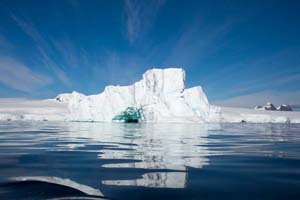
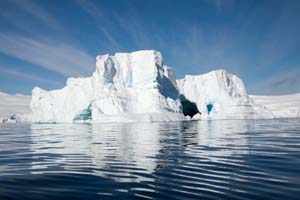 Portal Point, Antarctica
Portal Point, Antarctica
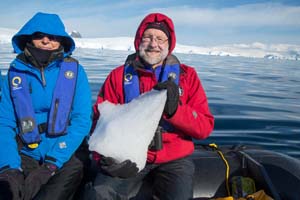 Tom, Portal Point, Antarctica
Tom, Portal Point, Antarctica
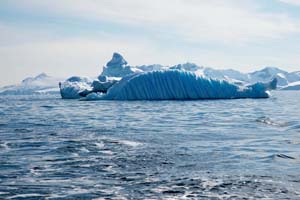 Portal Point, Antarctica
Portal Point, Antarctica
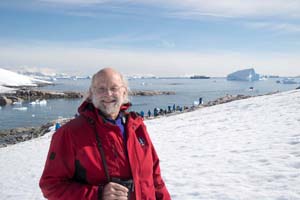 Tom, Portal Point, Antarctica
Tom, Portal Point, Antarctica
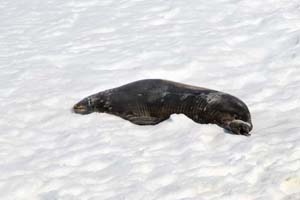 Weddell Seal (Leptonychotes weddelli), Portal Point, Antarctica
Weddell Seal (Leptonychotes weddelli), Portal Point, Antarctica
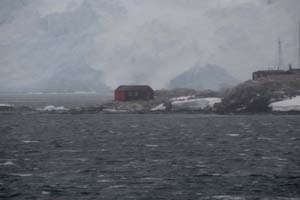 Port Lockroy
Port Lockroy
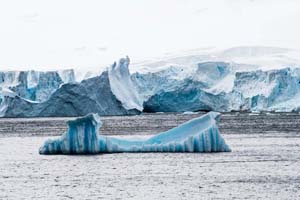 Iceberg
Iceberg
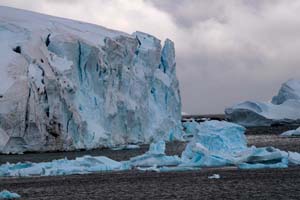 Iceberg
Iceberg
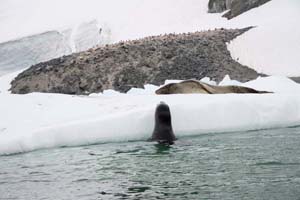
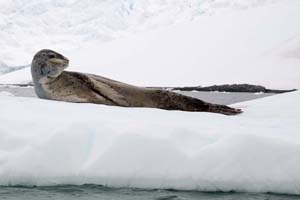 Leopard Seal (Hydruga leptonyx)
Leopard Seal (Hydruga leptonyx)
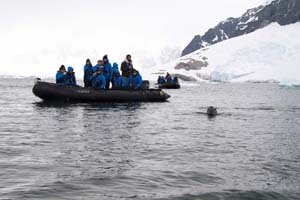
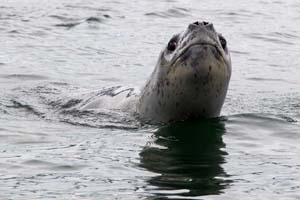 Leopard Seal (Hydruga leptonyx)
Leopard Seal (Hydruga leptonyx)
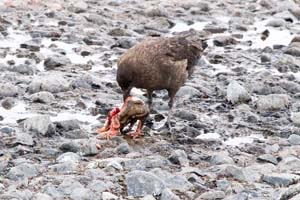 South Polar Skua (Stercorarius maccormici)
South Polar Skua (Stercorarius maccormici)
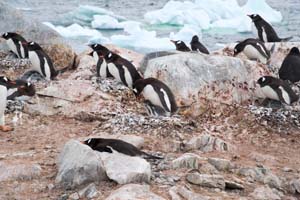 Gentoo Penguin (Pygoscelis papua papua)
Gentoo Penguin (Pygoscelis papua papua)
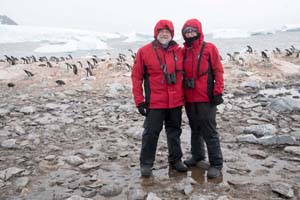 Tom and Ellyn
Tom and Ellyn
 Crabeater Seal (Lobodon carcinophaga)
Crabeater Seal (Lobodon carcinophaga)
 Zodiac Landing
Zodiac Landing

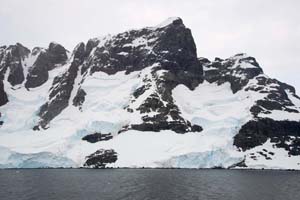 Lemaire Channel
Lemaire Channel
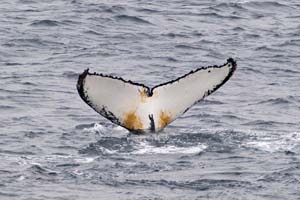
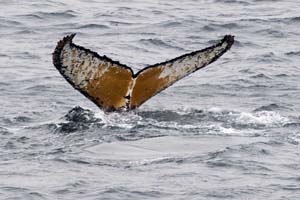
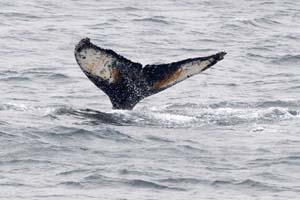 Humpback Whale (Megaptera novaeangeliae)
Humpback Whale (Megaptera novaeangeliae)
I really needn't have worried so much, since I was into and out of the water so quickly. Afterward, we got a drink of hot chocolate "medicated" with any sort of booze we wanted. I added some Drambuie.
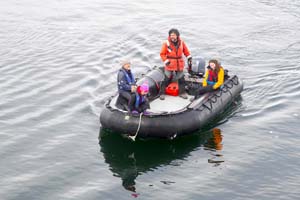 Plunge Photographers
Plunge Photographers
 Tom before the Plunge
Tom before the Plunge
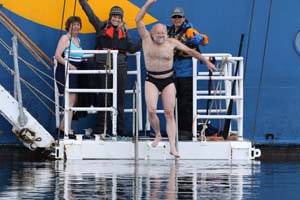
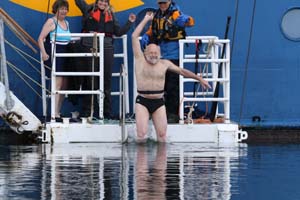
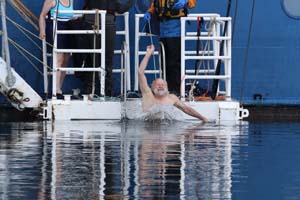
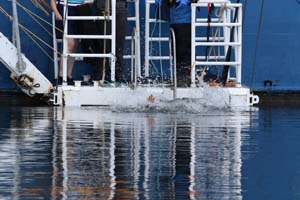 Tom during the Plunge
Tom during the Plunge
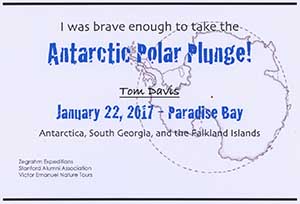 Here's my certificate!
Here's my certificate!
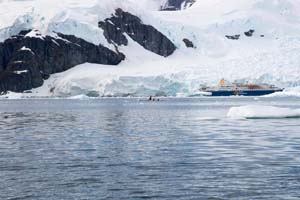 Ocean Diamond with Killer Whales
Ocean Diamond with Killer Whales
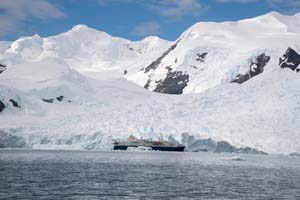 Ocean Diamond
Ocean Diamond
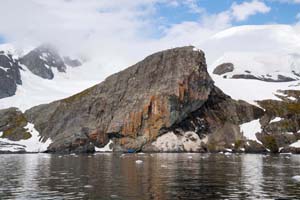
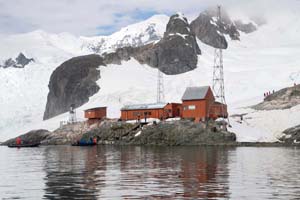 Almirante Brown
Almirante Brown
This is an Argentinian research station on the Antarctic peninsula. It used to be manned year-around until one year, because they couldn't find a replacement doctor to spend the winter, they tried to force the current doctor to stay over two winters in a row. He really didn't want to, so he burned down the station. A charred piece of wood from the old station is in the small museum there.
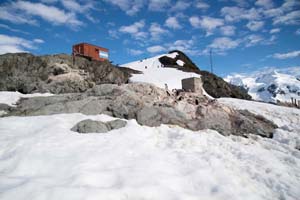
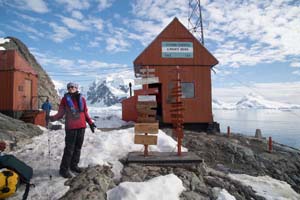 Almirante Brown
Almirante Brown
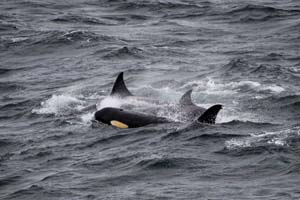
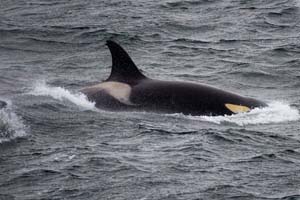 Killer Whale (Orcinus orca)
Killer Whale (Orcinus orca)
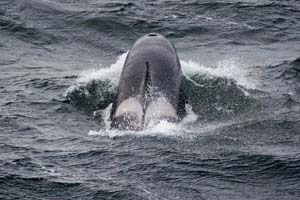
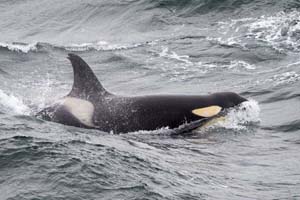 Killer Whale (Orcinus orca)
Killer Whale (Orcinus orca)